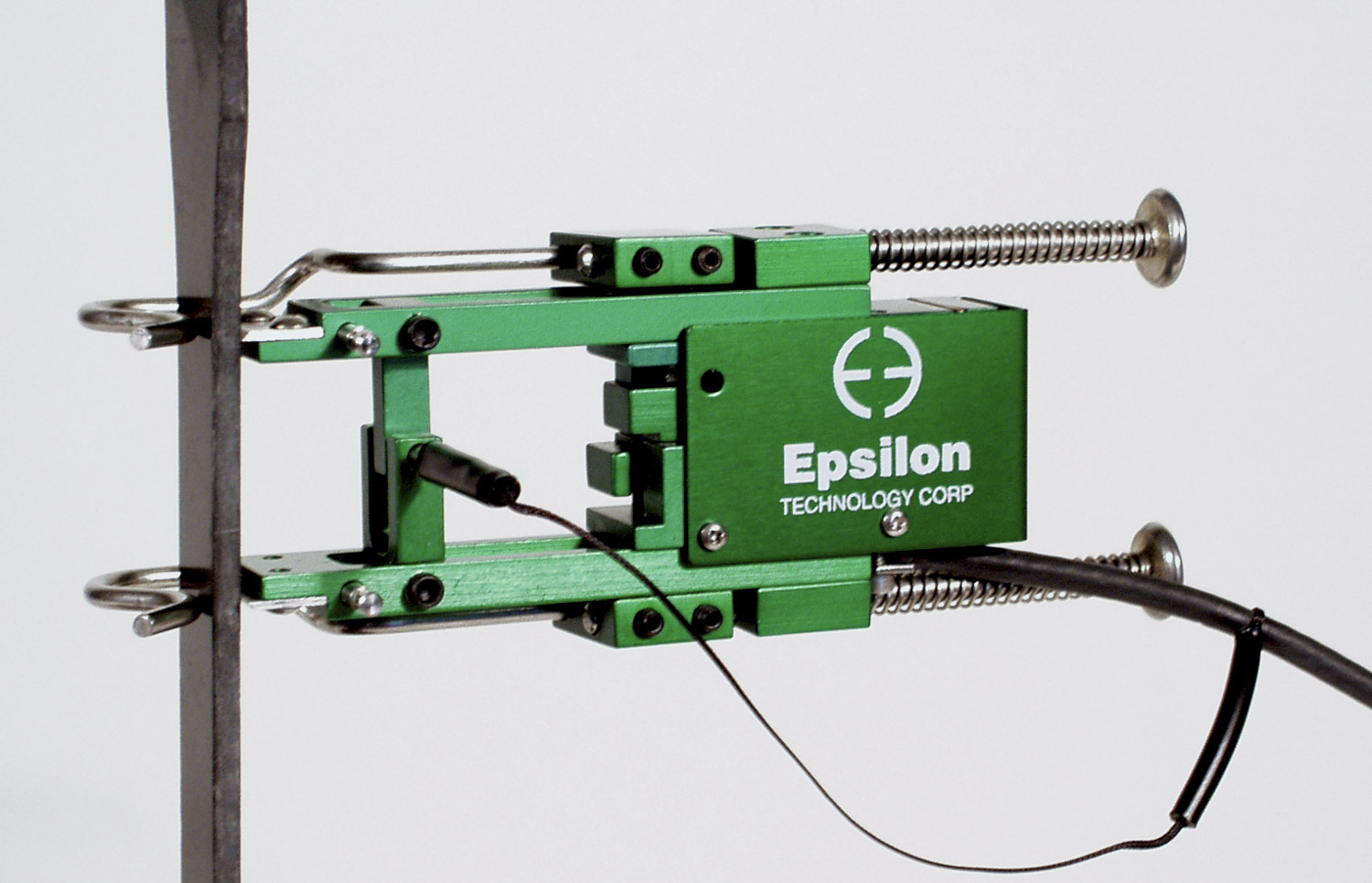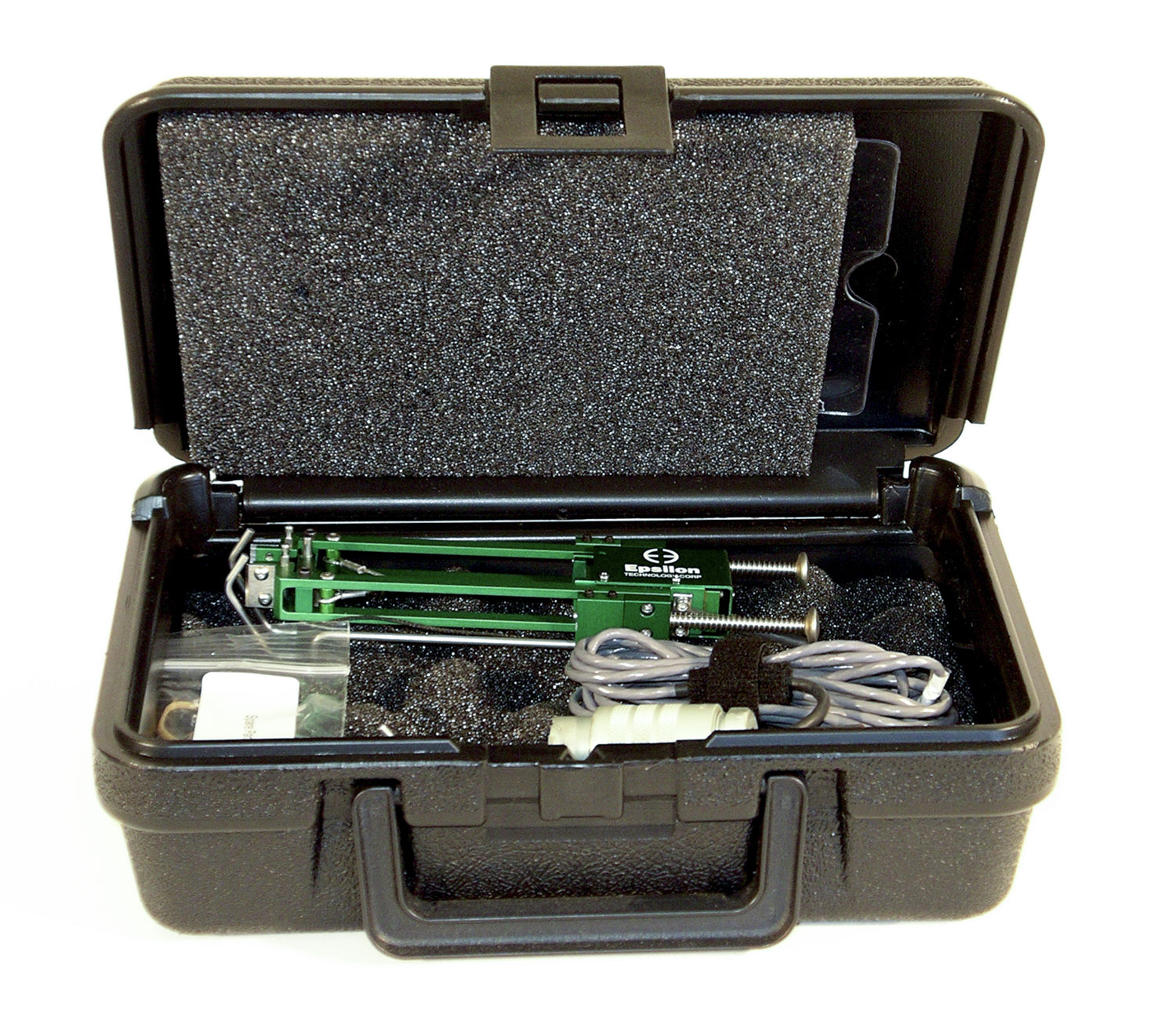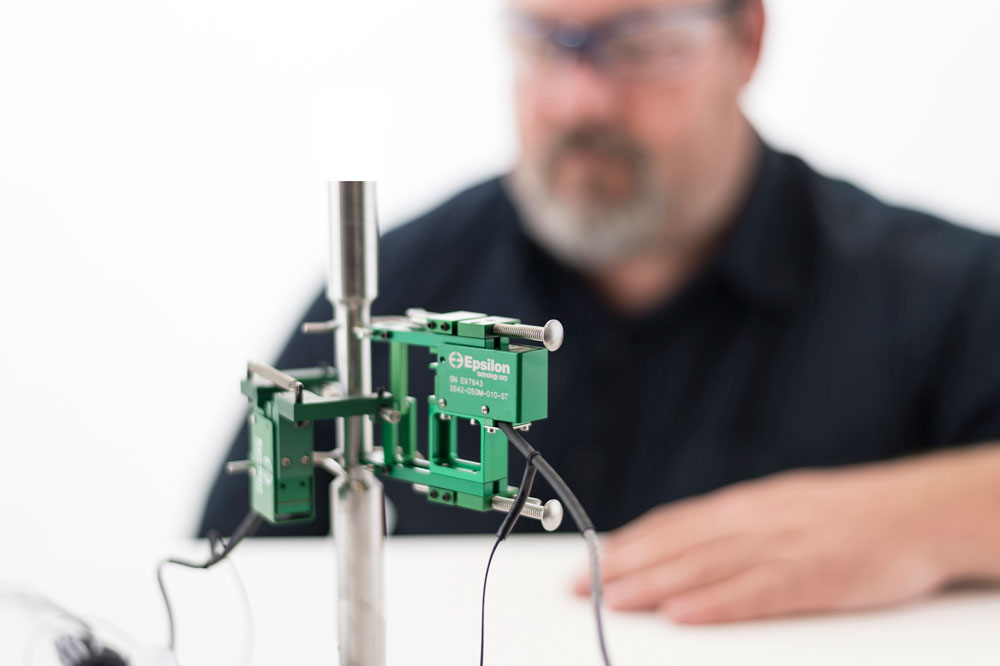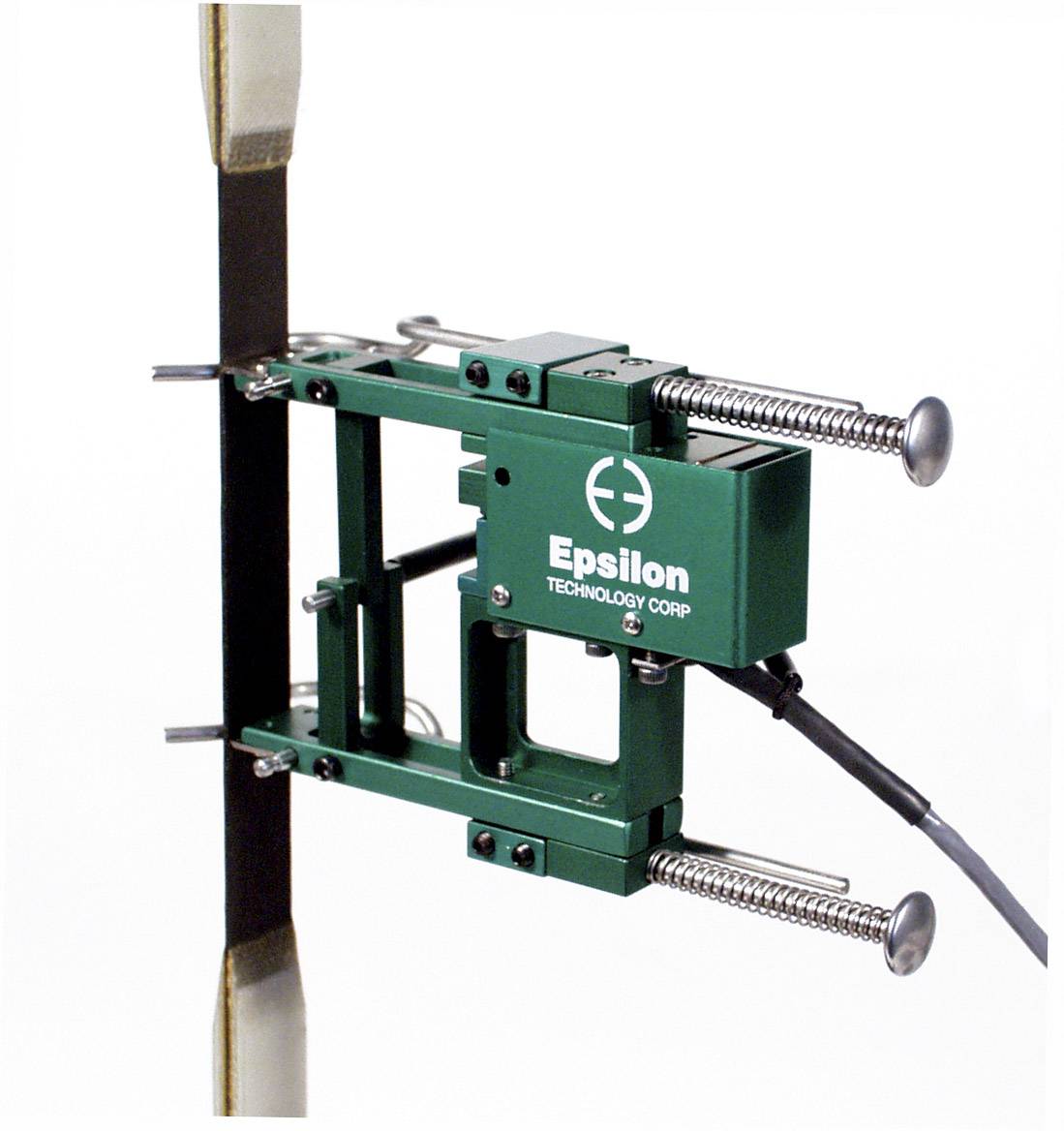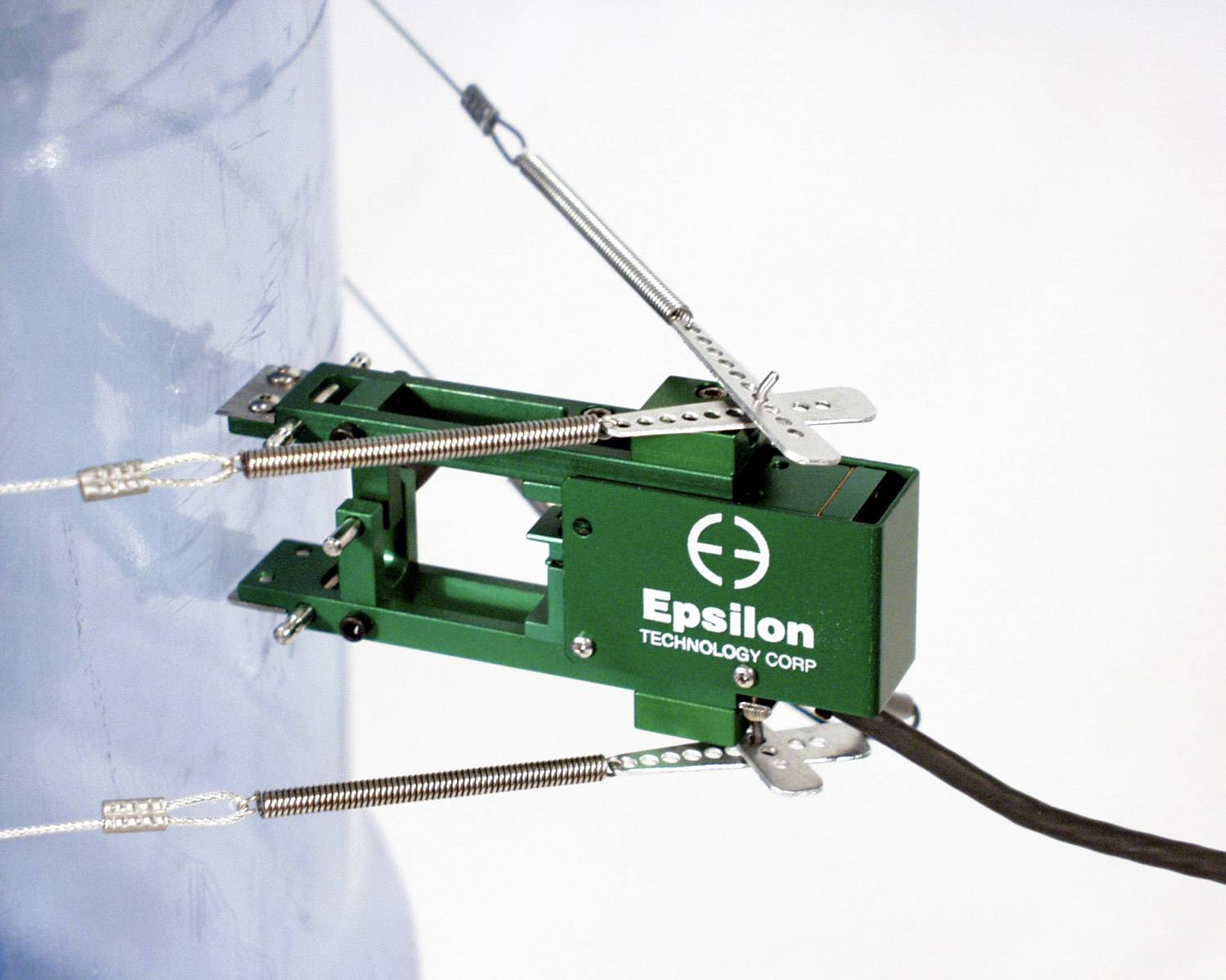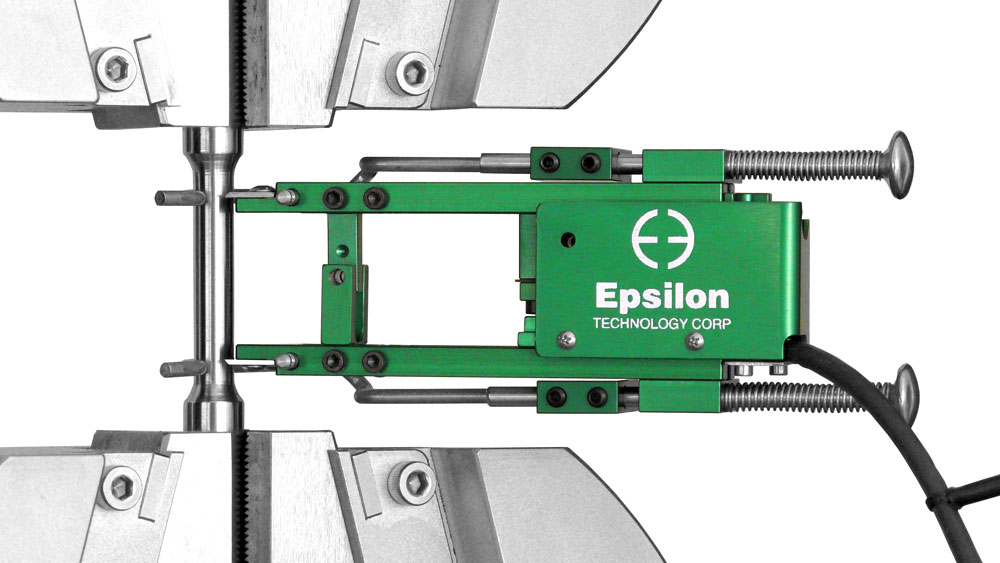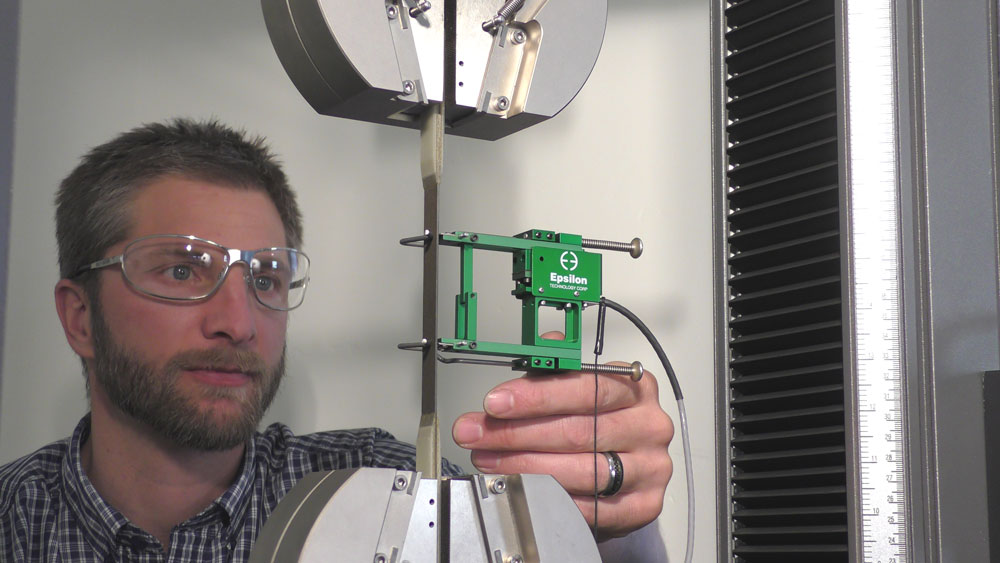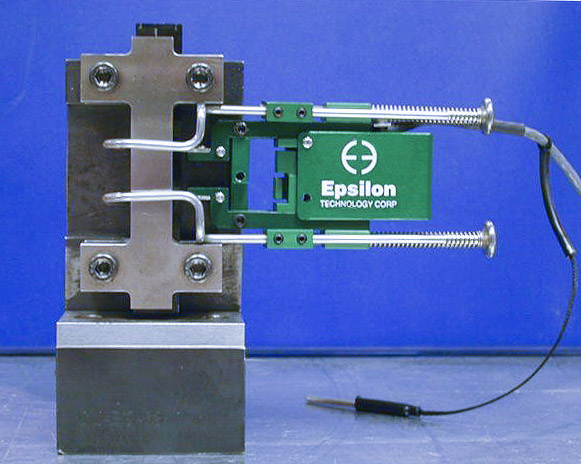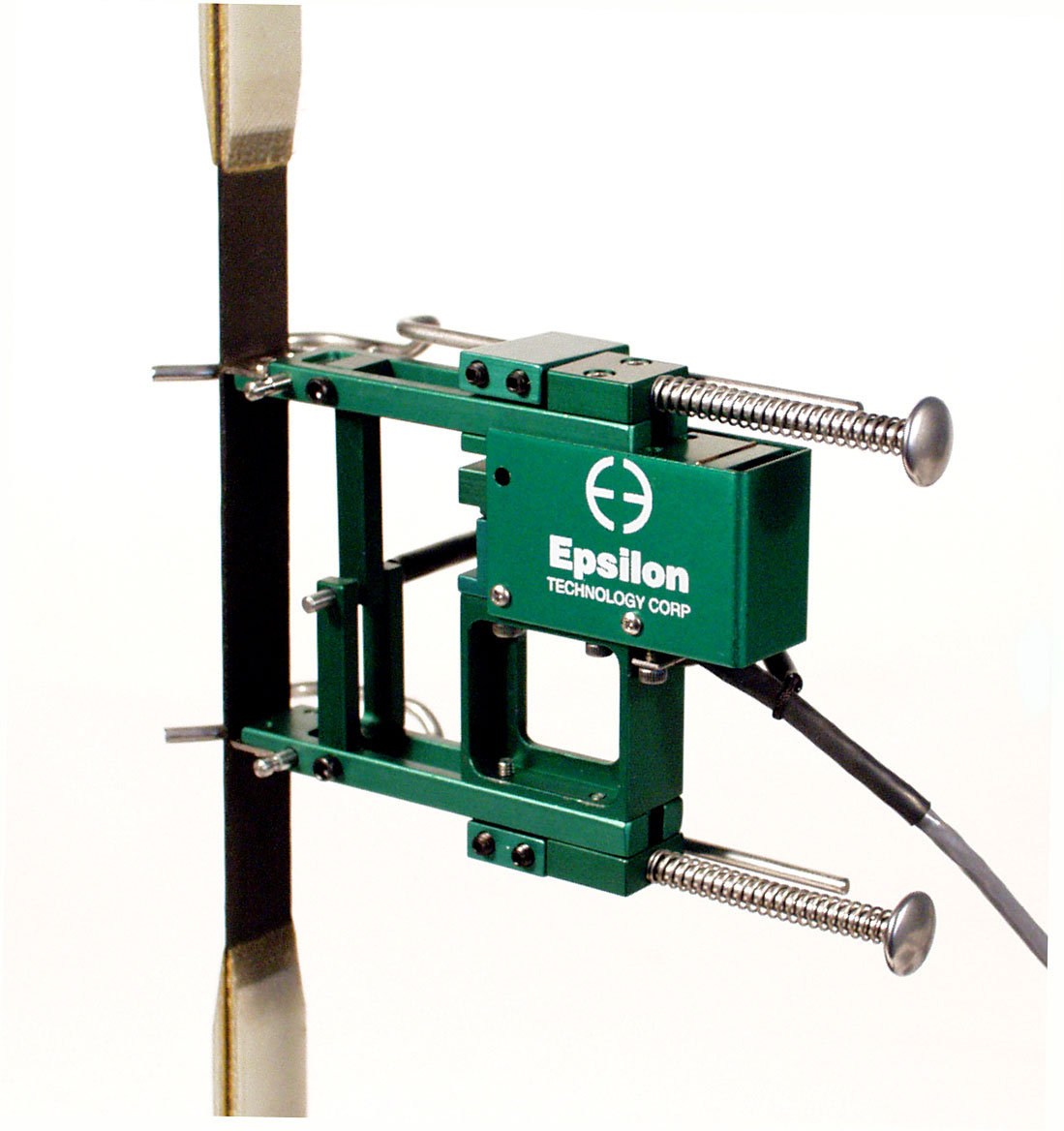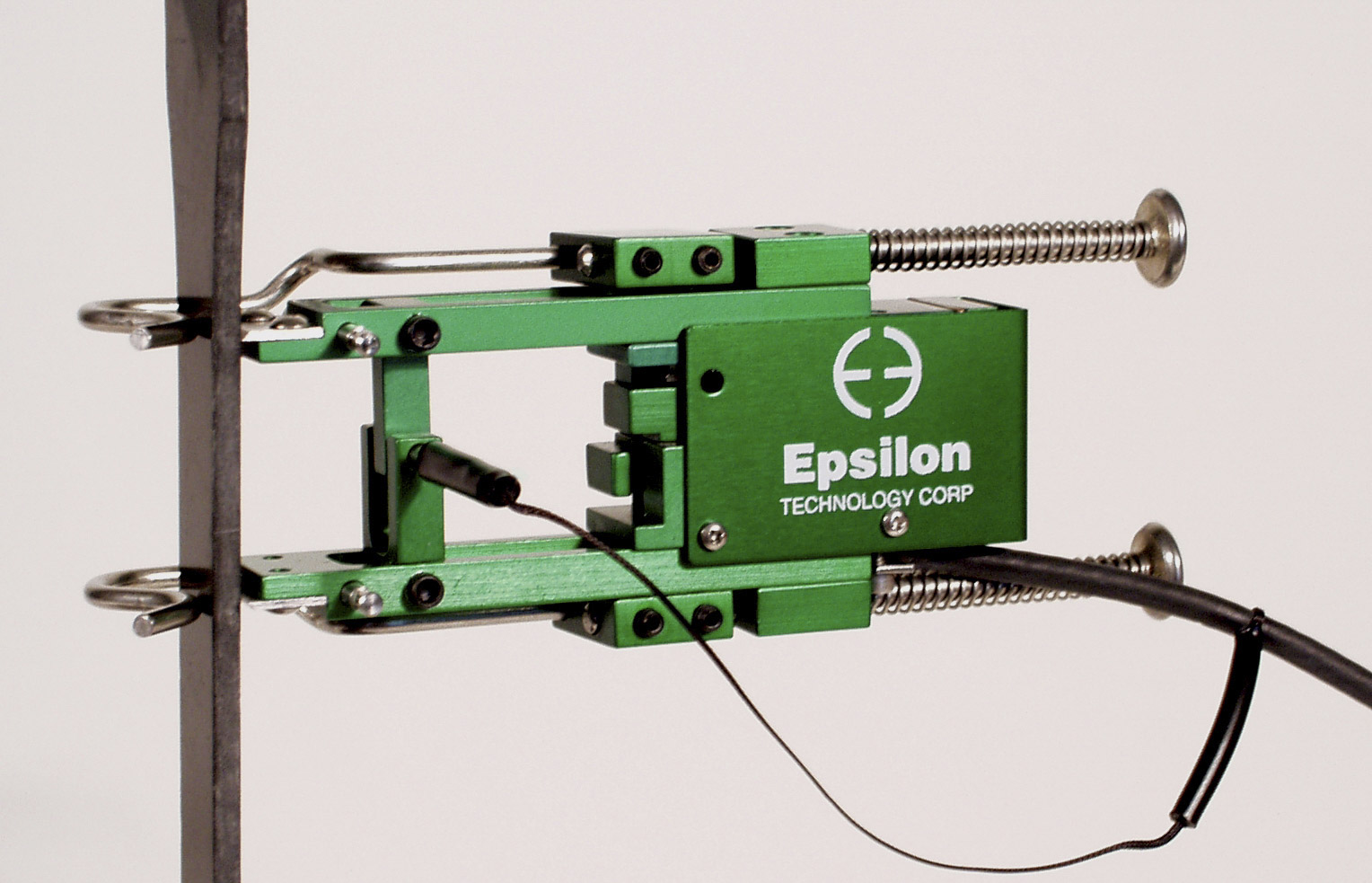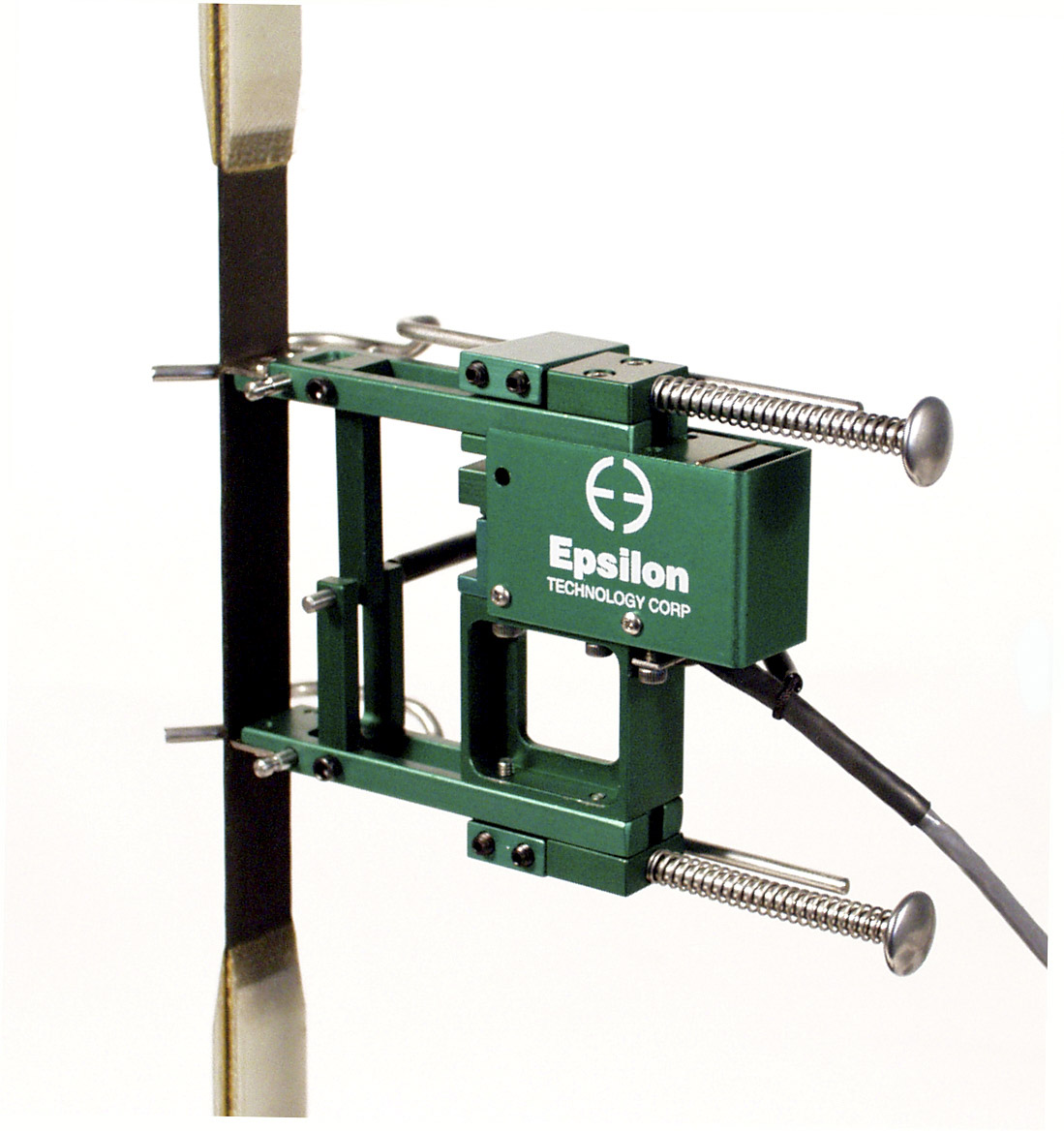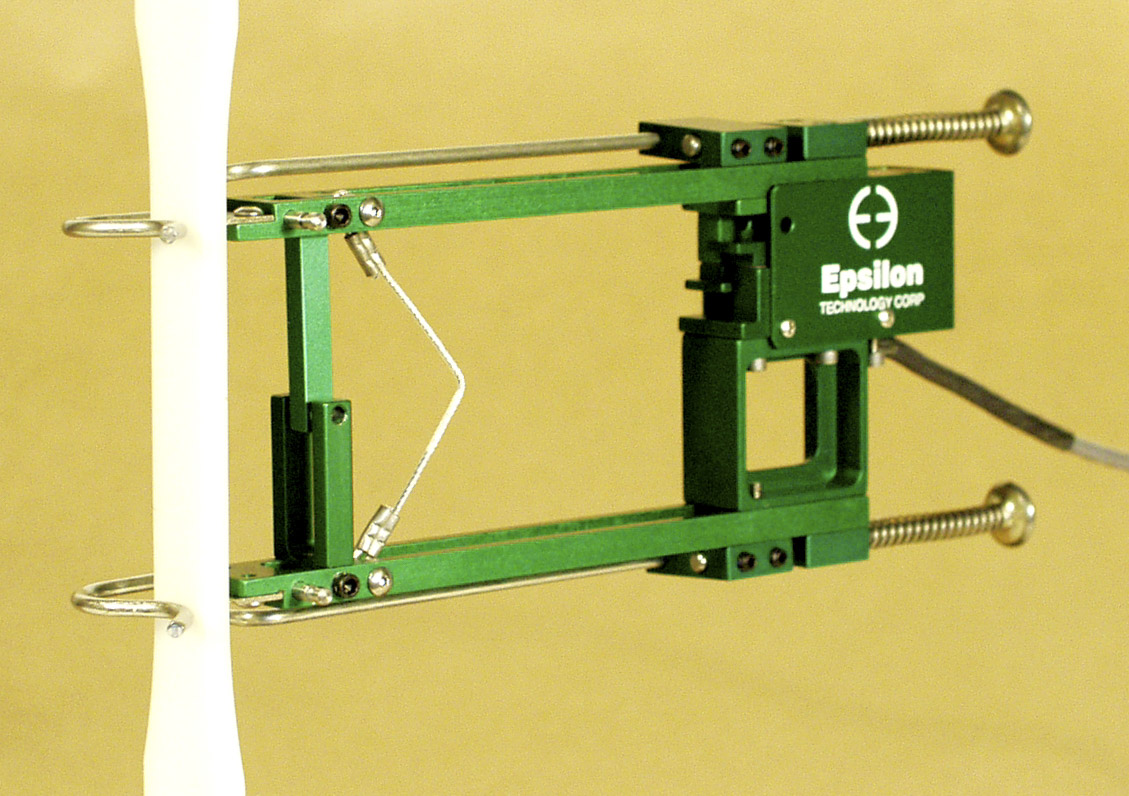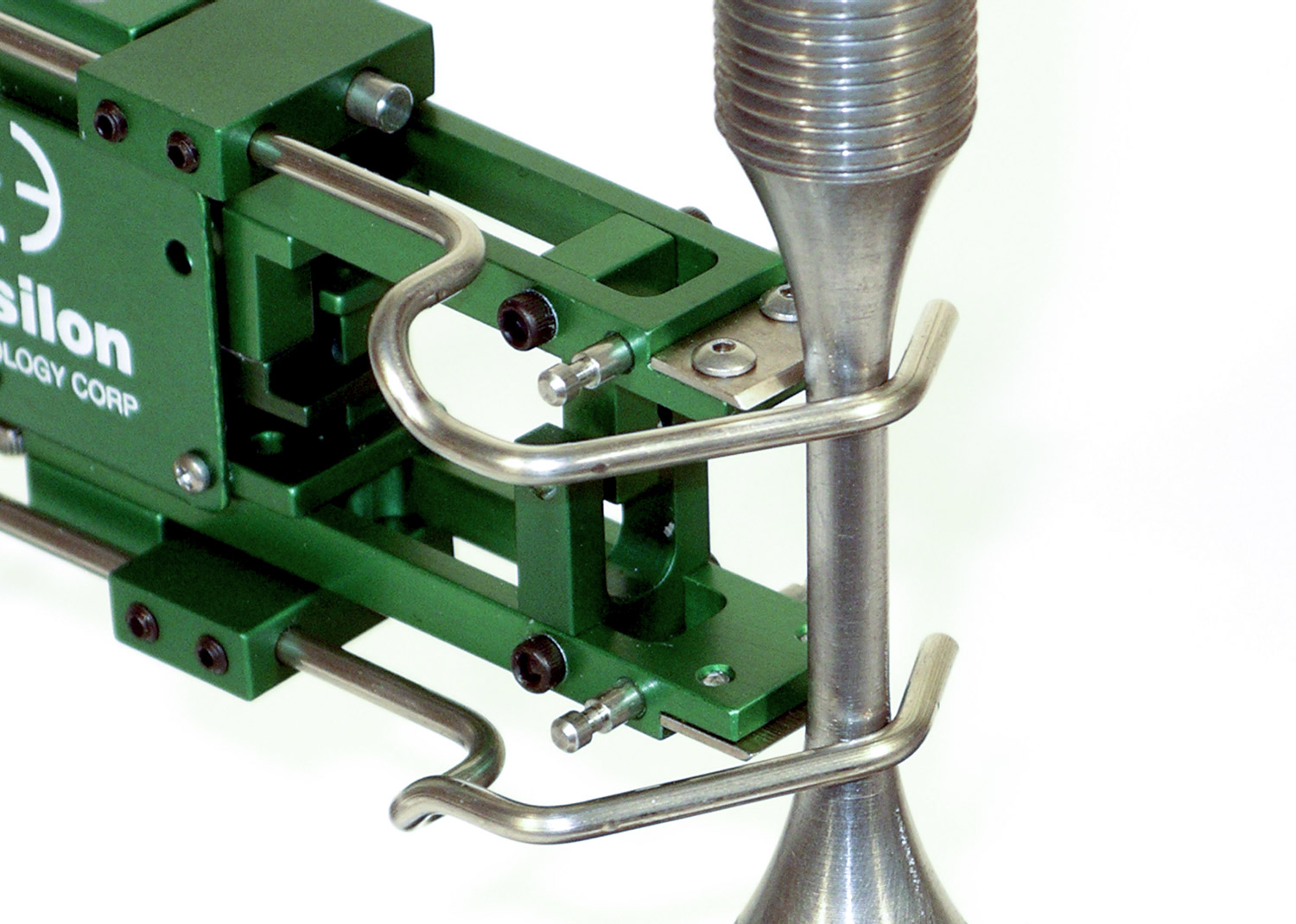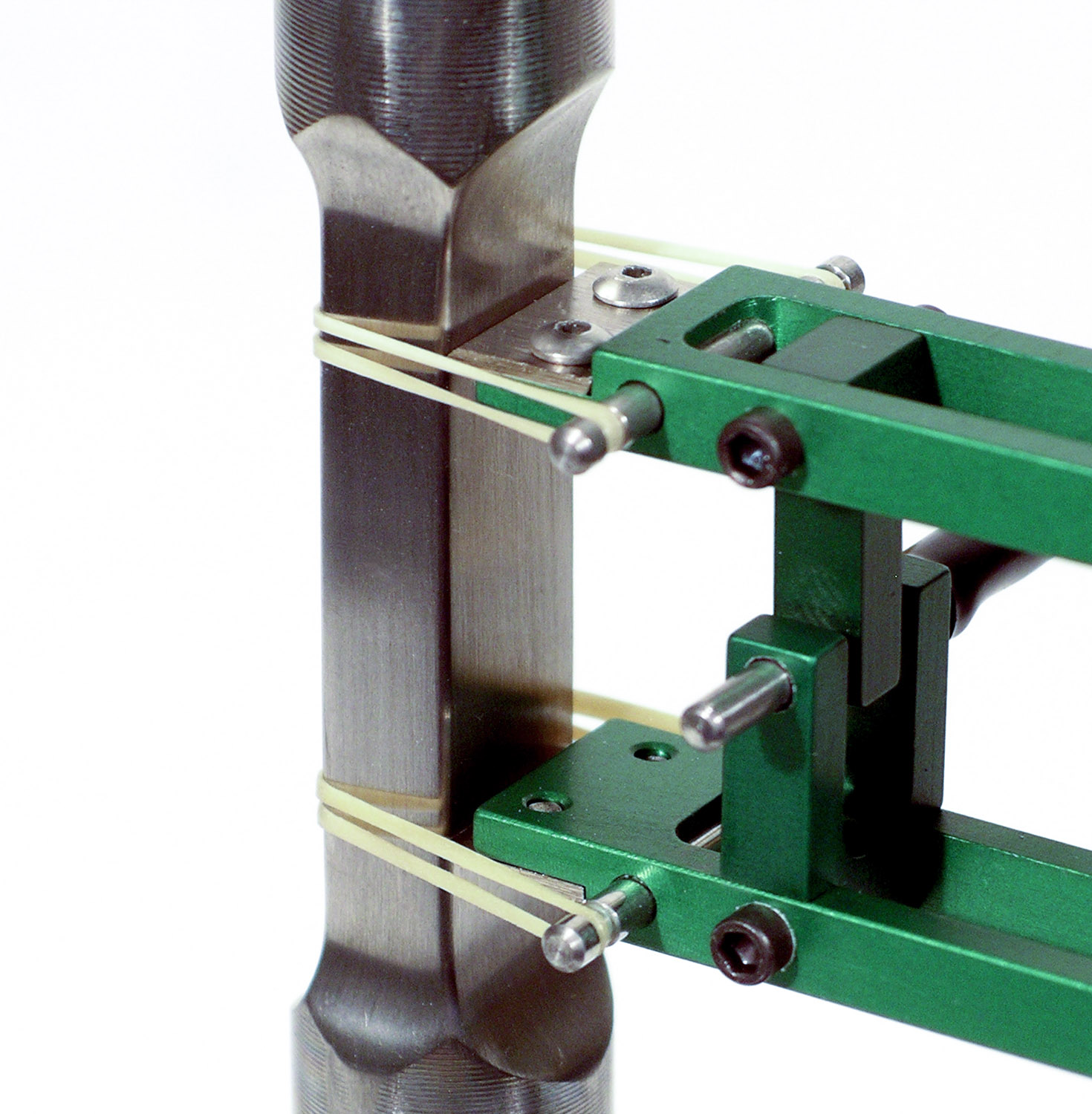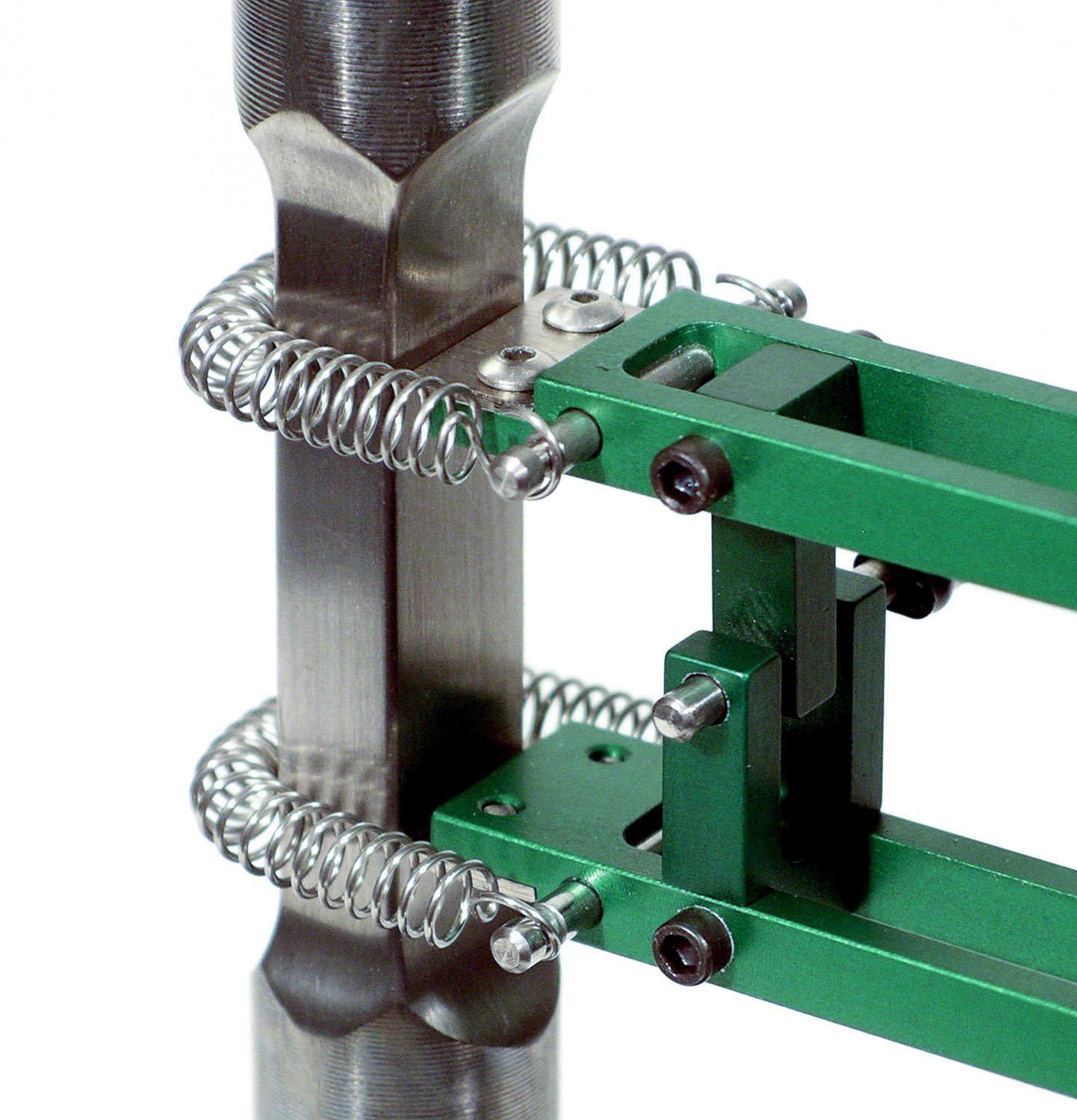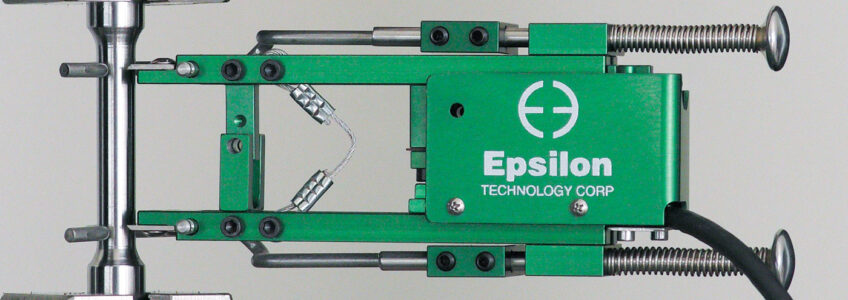
Axial Extensometer – Model 3542
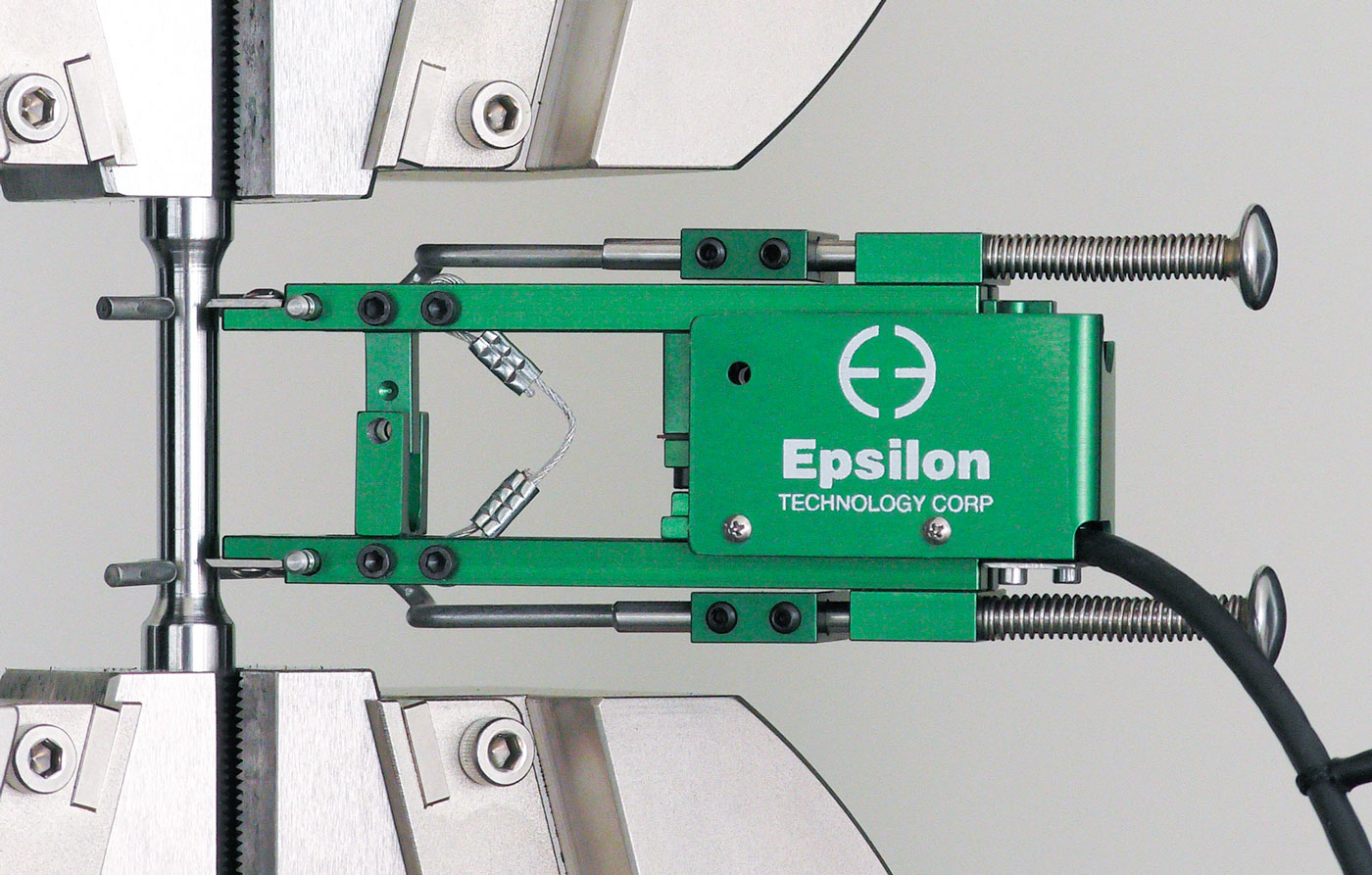
These extensometers are designed for testing a wide range of materials, including metals, plastics, composites and ceramics. All will perform both tension and compression strain measurement. The dual flexure design makes them very rugged and insensitive to vibrations, which permits higher frequency operation.
They come standard with Epsilon’s quick attach kit, making it possible to mount the extensometer on the test specimen quickly and easily with one hand. The quick attach kit can be removed, allowing mounting of the extensometer with springs or rubber bands.
Model 3542 extensometers are applicable for testing with the following standards:
• ISO 6892-1, 527-2, 527-4, 527-5, 10113
• ASTM E8, E9, D3039, D638, A370, D3552, E517, E646
Model 3542 extensometers are strain-gaged devices, making them compatible with any electronics designed for strain-gaged transducers. They are often connected to a test machine controller with electronics for a strained channel, and Epsilon will equip the extensometer with a compatible connector wired to plug directly into the controller. For systems lacking the required electronics, Epsilon can provide various solutions for signal conditioning and connection to data acquisition systems or other equipment.
For gauge lengths less than 20 mm (0.8 inches), Epsilon recommends the more compact Model 3442. For gauge lengths 100 mm (4 inches) or greater see Model 3542L.
- May be left on through specimen failure in most applications. i
- Full bridge, 350 ohm strain gaged design for compatibility with nearly any test system.
- All models can measure in both tension and compression and can be used for cyclic testing.
- Standard quick attach kit allows one hand mounting to specimens.
- Rugged, dual flexure design for strength and improved performance. Much stronger than single flexure designs, this also allows cyclic testing at higher frequencies.
- All models have mechanical overtravel stops in both directions. Cable stops are used for overtravel protection where required. Epsilon’s cable stops are fully contained between the arms of the extensometer and do not hang below where they can interfere with fixturing–especially during compression testing.
- Hardened tool steel knife edges are easily replaced. A spare set comes with every extensometer.
- Gauge length adapter kits enable configuration of multiple gauge lengths with one extensometer.
- Replaceable arms and spacers for ease of repair.
- High and low temperature options extend operation from as low as -270 °C to +200 °C (-454 °F to +400 °F).
- Includes the Epsilon Shunt Calibration System for on-site electrical calibration.
- Includes high quality foam lined case.
When does an extensometer have to be removed before specimen failure?
Remove model 3542 and 3442 extensometers before specimen failure, or use an Epsilon ONE® non-contacting extensometer, in the following applications:
- Rebar and other materials with textured or rough surface finishes (note: use model 3543 or Epsilon ONE to test rebar through failure)
- Wire cable
- Unidirectional composites and similar materials that explode / disintegrate at failure
- Non-rigid griping systems such as “lever action” wedge grips with moveable grip faces or grips with spherical seats
- Long samples of elastic material
- When the expected elongation of the material exceeds the extensometer’s measuring range (for example, using a 10% extensometer with a metal specimen that fails at 20% elongation)
- Rupture of internally pressurized specimens
Excitation: 5 to 10 VDC recommended, 12 VDC or VAC max.
Output: 2 to 4 mV/V, nominal, depending on model
Accuracy: Standard configurations meet ASTM E83 class B-1 accuracy requirements for gauge lengths ≥20 mm and class B-2 for <20 mm. All standard configurations meet ISO 9513 class 0,5. A test certificate is included.
Linearity: ≤0.15% of full scale measuring range
Temperature Range: Standard (-ST) is -40 °C to +100 °C (-40 °F to 210 °F)
Cable: Integral, ultra-flexible cable, 2.5 m (8 ft) standard
Standard Quick Attach Kit:
– Wireforms are included for round samples 2-25 mm (0.08-1.0 inch) diameter and flats up to 12 mm thick by 31 mm wide (0.5 inch by 1.25 inch); wireforms are available for many other specimen sizes – contact Epsilon
– Rubber bands and springs for attachment are also included
– Model 3442 is recommended for specimen diameters <2 mm
Operating Force: Depends on model configuration; 10 to 100 g typical
![]()
- Quick attach kit wireforms or cable attachment for large specimens
- Adapter kits to change gauge lengths
- Connectors to interface to nearly any brand of test equipment
- Special coatings and stainless steel knife edges available for biomedical tests
- Specialty Knife Edges
Extensometers for composites compression testing. Models 3542 and 3442 extensometers can be furnished to clip directly onto composites compression fixtures, such as for ASTM D695. These use specially made Quick Attach Kit arms for the customer’s fixture. Consult the factory for specifics. See also the Model 3442 Miniature Extensometer.
Product Videos
Ordering Information
Click table options to configure
Gauge Length i
| mm or inches | # |
|---|---|
| 10.0 mm | -010M¹ |
| 12.0 mm | -012M¹ |
| 12.5 mm | -0125M¹ |
| 20.0 mm | -020M |
| 25.0 mm | -025M |
| 30.0 mm | -030M |
| 35.0 mm | -035M |
| 40.0 mm | -040M |
| 45.0 mm | -045M |
| 50.0 mm | -050M |
| 75.0 mm | -075M |
| 80.0 mm | -080M |
| 0.500 in | -0050¹ |
| 0.640 in | -0064¹ |
| 1.000 in | -0100 |
| 1.400 in | -0140 |
| 2.000 in | -0200 |
Selecting Extensometer Gauge Length
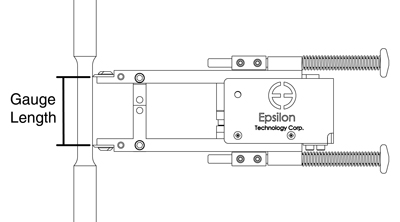
Extensometer Gauge Length is the distance between the extensometer’s initial measuring points on the specimen. If you are using a testing standard, check the standard for extensometer gauge length requirements. Many test standards specify the specimen dimensions and a matching extensometer gauge length.
Many specimens have a reduced section length that is designed to be greater than the extensometer’s gauge length.
Measuring Range² i
| % strain | # |
|---|---|
| ±5% | -005³ |
| ±10% | -010 |
| +20%/-10% | -020 |
| +25%/-10% | -025 |
| +50%/-10% | -050 |
| +100%/-10% | -100 |
Selecting Extensometer Measuring Range
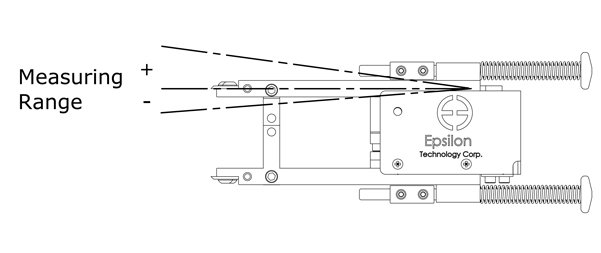
Measuring Range is the measuring capacity of the extensometer in tension (+) or compression (-) in units of % strain, maximum extension, or maximum deflection. When measuring range is in units of % strain, this means the maximum extension as a percentage of the gauge length.
Estimate the maximum strain or extension values you will need to measure, such as the total strain when the extensometer is removed after offset yield or the elongation at fracture. Then select a measuring range for the extensometer that meets or exceeds the requirements for the materials you are testing. If you are using a testing standard, also check the standard for extensometer requirements.
Temperature Range
| degrees | # |
|---|---|
| -270 °C to 100 °C (-454 °F to 210 °F) | -LT |
| -40 °C to 100 °C (-40 °F to 210 °F) | -ST |
| -40 °C to 150 °C (-40 °F to 300 °F) | -HT1 |
| -40 °C to 200 °C (-40 °F to 400 °F) | -HT2 |
| -270 °C to 200 °C (-454 °F to 400 °F) | -LHT |
Model Number: 3542 – _ _ _ _ – _ _ _ – _ _
Model 3542 Available Versions: Any combination of gauge length, measuring range and temperature range listed above is available, except as noted. Other configurations may be available with special order; please contact Epsilon to discuss your requirements.
¹Epsilon recommends model 3442 for applications with gauge lengths <20 mm (0.8 inches).
²Compressive ranges can be adjusted to higher values if required. Please contact Epsilon for your specific testing requirement.
³Not available in 10 mm, 12.5 mm, or 0.50 inch gauge lengths.
Example: 3542-050M-050-HT2: 50.0 mm gauge length, +50%/-10% measuring range, high temperature option (-40 °C to 200 °C)

